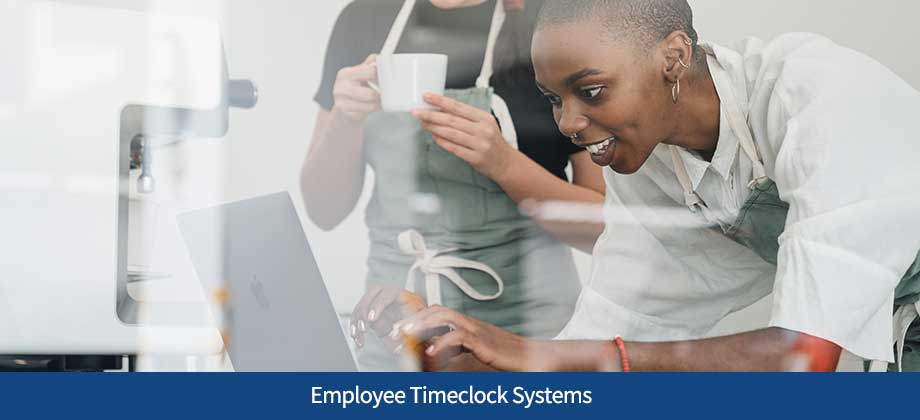What to Look for in a Timeclock System

Accurately gauging the time and attendance of your employees is critical to keeping your books in line. A good time tracking system allows you to maximize productivity and minimize time theft, which is when an employee gets paid for time they didn’t actually work. But with so many timeclock systems out there, it’s tough to choose what is right for your business. Today, we’ll dive into the different types of time and attendance solutions out there so you can make the best choice.
The purpose of a timeclock is to provide business owners with a clear view of when their employees are coming in and clocking out for the day. Particularly in the retail world, where budgets are tight and time is of great importance, even a matter of minutes could make a large impact on productivity and ROI. There are 4 main types of timeclock systems we’re going to look at: Punch cards, magnetic swipe cards, online, and biometric.
Punch Cards
A bit antiquated, a punch-card option was once the only form of time tracking–and it’s still utilized by some small businesses today. You probably know the drill: an employee puts a physical card into a punch clock, which stamps it with the current time. Time is then manually entered into a payroll system by whomever is in charge of that aspect of the business. Punch cards are a cinch to use and often quite inexpensive, but the possibility for error is high since the input of time is done manually.
Magnetic Swipe Cards
Swipe cards are essentially badges that your employees carry around to get in and out of your building. A simple swipe enables people to “badge in” and their time is logged automatically. There are other versions of a swipe card that use radio-frequency identification (RFID) so employees can tap their badge near the time scanner. These are a convenient solution for folks, but the drawback is that these cards are also easy to lose if you don’t keep track of them. They can also be stolen, left at home, or even demagnetized.
Online
If you’re looking for a less bulky timeclock, consider an online option. Clocking in and out via computer or cell phone is a newer way employers are keeping track of their staff’s hours. This type of system allows employees to manually enter their time in and out, and a lot of them also offer options for folks to request time off and sick days. Some systems even integrate with your payroll service to reduce the amount of errors that may occur when data is transferred from one application to another. There is a downside, however: clocking in and out online, especially if you’ve got remote workers, can make it easier for employees to commit time theft.
Biometric
Arguably the most technologically advanced of the timekeeping options, the biometric timeclock uses things such as fingerprints, facial scanners, and eye scanners to clock employees into work. Biometric timeclocks are loved by employers that are worried about something called “buddy punching,” which is when an employee clocks in and out for other workers. Buddy punching is estimated to cost U.S. employers $373 million annually. That being said, biometric systems are ideal for cutting back on time fraud. On the flip side, it’s critical that businesses are able to keep the biometric data they are storing safe.
The Financial Pantry, ARF Financial’s marketing and financial blog, is a great resource for small business owners just like yourself. Featuring articles that cover today’s top industry trends and what’s happening in the financial industry, it’s your one-stop shop for all things small business. Browse through our resources, plus take a read through our white papers and case studies for even more information on loan products to help your business thrive.

